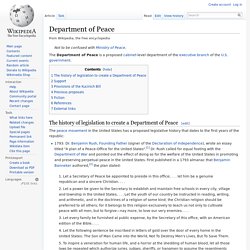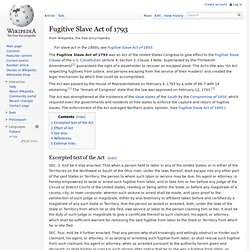

Americans For Department Of Peace. ‘U.S. Department of Peace’ may never get its chance. It is the Hope Diamond of liberal ideas: pure, breathtaking and highly impractical in the real world.

The proposal has been submitted for consideration in every Congress since 2001, and the idea behind it is that the federal government could stop wars, pacify street gangs, and distill violence out of the American soul itself. All it would take was a new Cabinet-level department and $10 billion a year in taxpayer money. But now the ultimate Capitol Hill long shot — the “U.S. Department of Peace” — is looking even less likely than usual. It is losing its champion in the House. “Of course it could work,” said Rep. Last week, Kucinich announced that he would leave Congress after eight terms. Earlier this year, he had lost a primary contest against Rep. Kucinich’s departure will remove one of the most colorful characters from Congress’s daily melodrama: an antiwar vegan ventriloquist who once saw a UFO while hanging out with Shirley MacLaine. Here’s how the bill would work: Department of Peace. The Department of Peace is a proposed cabinet-level department of the executive branch of the U.S. government.

The history of legislation to create a Department of Peace[edit] The peace movement in the United States has a proposed legislative history that dates to the first years of the republic: 1793: Dr. Benjamin Rush, Founding Father (signer of the Declaration of Independence), wrote an essay titled "A plan of a Peace-Office for the United States".[1] Dr. Rush called for equal footing with the Department of War and pointed out the effect of doing so for the welfare of the United States in promoting and preserving perpetual peace in the United States.
Fugitive slave act. Fugitive Slave Act: Congress Establishes First Fugitive Slave Act On This Date In 1793. America is replete with the racist and oppressive reminders of the institution of slavery. One such hallmark is that on this date in 1793, Congress passed the first law declaring escaped slaves to be brought back to their masters by harsh means with the Fugitive Slave Act. Northern and Southern states were bound to the law, although the North relaxed the strict measures and even allowed slaves seeking freedom a fair trial.
SEE ALSO: ‘Orangeburg Massacre’ In South Carolina Occurred On This Day In 1968 The main portion of the law stated: No person held to service of labor in one state, under the laws thereof, escaping into another, shall, in consequence of any law or regulation therein, be discharged from such labor or service or labor, but shall be delivered up on claim of the party to whom such service or labor may be due. But even with the protection of judges and authority figures in the North, many slaves continued to be seized as rounding up escapees became a lucrative business . Fugitive Slave Act of 1793. The Fugitive Slave Act of 1793 was an Act of the United States Congress to give effect to the Fugitive Slave Clause of the U.S.

Constitution (Article 4, Section 2, Clause 3 Note: Superseded by the Thirteenth Amendment)[1] guaranteed the right of a slaveholder to recover an escaped slave. The Act's title was "An Act respecting fugitives from justice, and persons escaping from the service of their masters" and created the legal mechanism by which that could be accomplished. The Act was passed by the House of Representatives on February 4, 1793 by a vote of 48–7 with 14 abstaining.[2] The "Annals of Congress" state that the law was approved on February 12, 1793.[3]